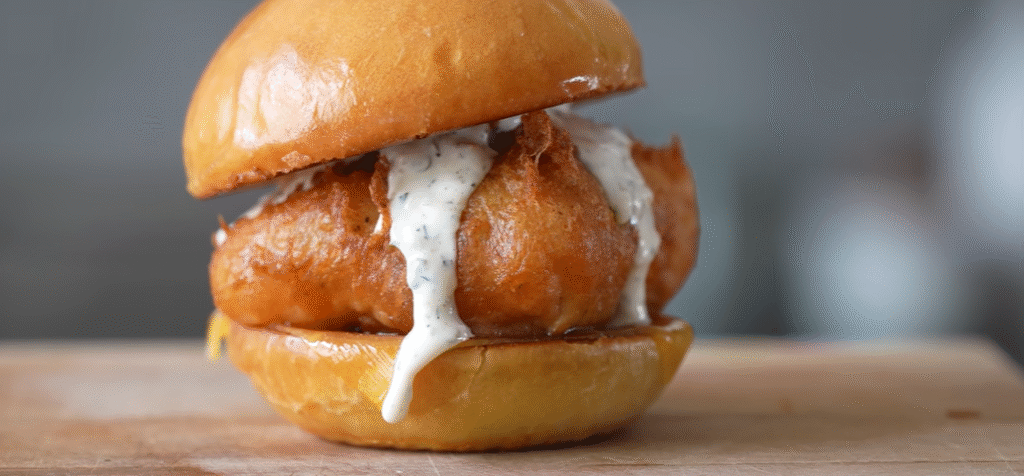McDonald’s Filet-O-Fish Deal 2025 – Key Information Table
| Feature | Description |
|---|---|
| Sandwich Name | Filet-O-Fish |
| Main Ingredients | Fried wild-caught Alaskan Pollock, tartar sauce, slice of cheese, soft bun |
| Key 2025 Deals | 2 for $6, Buy One Add One for $1, Friday $2.50 Special |
| Part of McValue Menu | Yes – bundled in the $5 meal deal |
| Reward Points Option | Earn free Filet-O-Fish via MyMcDonald’s Rewards |
| Available Ordering Methods | McDonald’s App, Mobile Order & Pay, in-store, McDelivery |
| Seasonal Offer Tie-In | Lent promotion available in select locations |
| Campaign Duration | Extended through summer 2025 |
| Recent Brand Campaigns | McDonald’s commercial push for affordable fish-based options |
| Reference Source | www.mcdonalds.com/en-us/product/filet-o-fish.html |

The Filet-O-Fish has subtly returned to McDonald’s prominence in recent months, serving as both a focal point of their 2025 value strategy and a nostalgic favorite. With deals like 2 for $6 and the incredibly cheap Buy One Add One for $1, the Filet-O-Fish Deal 2025 has generated a buzz that is remarkably similar to that of the early 2000s $1 menu era. In a time when other chains are gradually raising their prices, this return to customer-friendly pricing is particularly calculated.
McDonald’s has enhanced an already reliable product with a layer of digital loyalty by utilizing app-driven engagement through Mobile Order & Pay. Through MyMcDonald’s Rewards, customers are encouraged to accrue points, which many are then using to get a free Filet-O-Fish. Regulars and frugal families find this to be incredibly effective—not just as a way to save money, but also as a fulfilling routine.
Quick-service restaurants have tried a ton of different seafood ideas in the last ten years, but few have been as successful as the Filet-O-Fish. The sandwich was first served to Catholic patrons during Lent in 1962, and it has remained surprisingly sturdy—never showy, but always reliable. Although Wendy’s and Popeyes have dabbled in seasonal fish dishes, none of the chains have done so consistently enough to establish them as mainstays on their menus.
McDonald’s has developed a very flexible pricing structure through app-only offers and in-store promotions, like Friday Filet-O-Fish for $2.50. These promotions are well-timed, particularly during the Lenten season when demand for fish sandwiches soars. The brand has once again succeeded in being both commercially astute and culturally relevant by fusing affordability with religious timing.
The Filet-O-Fish was added to McDonald’s McValue Menu through clever bundling. This $5 meal deal comes with a four-piece McNugget, small fries, a sandwich (which may be the Filet-O-Fish), and a drink. It feels surprisingly affordable for anyone dealing with rising grocery costs or shrinking lunch budgets. It’s relief on a platter, not just lunch.
The fact that two Filet-O-Fish sandwiches are available for $6 is a minor victory for students and medium-income households. At a time when the majority of combo meals cost between $9 and $12, this deal drastically lowers out-of-pocket expenses. It’s also a sensible option, not just a cheap one, with an average calorie count that falls within dietary restrictions.
Fan celebrations of these deals have flooded social media. Users post screenshots of app rewards, coupon hacks, and customizations (such as extra tartar or no cheese) on Reddit, Instagram, and TikTok. The emotional resonance—the sandwich has turned into a comfort food—is more intriguing. a representation of stability in the face of uncertainty. The Filet-O-Fish is bridging generations, whether it’s a retiree remembering the menu from the 1970s or a construction worker enjoying two sandwiches during a brief break.
McDonald’s choice to leverage nostalgia without sacrificing digital relevance has been especially creative in the context of contemporary marketing. McDonald’s is giving Gen Z the best of both worlds as they experiment with new food formats and delivery-first experiences: classic flavor combined with app-first benefits. The 2025 deal is particularly alluring because of this fusion of technology and tradition.
Although not directly related to the Filet-O-Fish, celebrity culture has hinted at its resurgence. Although it wasn’t part of Cardi B and Offset’s McDonald’s meal, fans have regularly asked for a “Cardi B Fish Combo” in parody posts and comments. Even in meme form, this organic momentum shows how ingrained the product is in the public consciousness.
McDonald’s has avoided the fast food industry’s propensity to overcomplicate by emphasizing simplicity. Many chains use fusion flavors, ghost kitchens, or intricate ingredient stories to follow trends. On the other hand, the Filet-O-Fish stays grounded with its flaky white fish, tartar sauce, American cheese, and bun. That’s all. And that’s what matters. Something simple but reliable feels like a tiny luxury in the middle of all the chaos.
Fast-food restaurants were compelled to redesign their customer service during the pandemic. Curbside delivery, menu simplification, and app adoption were all part of McDonald’s response. Not only did the Filet-O-Fish survive that stage, but it also became more assimilated into the system. It became extremely effective as a digital product, not in the culinary sense. It is easy to deliver operationally, rewards loyalty, and fits into bundle models.
McDonald’s is anticipated to test out regional flavor enhancements and bundle reorganizations in the upcoming years, but insiders predict the Filet-O-Fish will stay the same. It’s too tied to tradition and too ingrained in the minds of the customers. Similar to the Big Mac or Chicken McNuggets, it has established itself as an anchor product, a function it excels at.
McDonald’s has maintained national consistency in messaging while ensuring local autonomy in pricing through partnerships with franchisees in a variety of geographical areas. For this reason, some customers in Florida receive push alerts for the 2 for $6 combo, while others in Chicago see Friday deals for $2.50. The Filet-O-Fish campaign is especially sustainable in markets with varying consumer behaviors because of its adaptable structure.
This agreement also portends a wider shift back toward value-based marketing, according to industry analysts. Consumers are reducing their discretionary spending as long as economic uncertainty persists. Fast food, which was once thought to be inexpensive by default, is now being closely examined for its cost. The Filet-O-Fish plays a small but significant part in this equation. It competes on the basis of reliable value rather than gourmet flair.
Google Trends indicates that searches for “McDonald’s fish sandwich deal” and “Filet-O-Fish special 2025” have increased since the year began. Despite being frequently disregarded, this data captures the urgency of consumers in real time. Small price reductions start to feel like opportunities when fast food prices start to feel premium.
